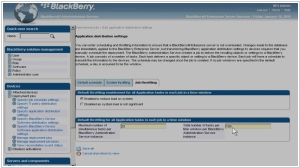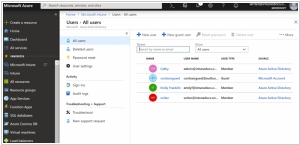BlackBerry Enterprise Service vs Microsoft Endpoint Manager
August 28, 2023 | Author: Michael Stromann
BlackBerry Enterprise Service (BES) and Microsoft Endpoint Manager are two prominent solutions in the realm of enterprise mobility management and security. They serve the critical function of managing and securing devices, applications, and data within an organization's ecosystem. However, they exhibit key differences in terms of their origin, focus, and integration capabilities.
BlackBerry Enterprise Service, developed by BlackBerry, has a legacy deeply rooted in mobile security. It gained prominence for its early focus on providing secure communication and email services. BES places a strong emphasis on end-to-end encryption, offering a comprehensive suite of security features tailored to meet the demands of industries with strict compliance requirements, such as finance and healthcare. Its strength lies in its ability to provide a highly secure environment while maintaining a balance between security and productivity. BES also offers features like containerization, which helps keep personal and corporate data separate on devices.
On the other hand, Microsoft Endpoint Manager is a part of the Microsoft 365 suite and represents a broader approach to unified endpoint management. Formerly known as Intune and System Center Configuration Manager (SCCM), it brings together device management and application deployment across various platforms, including Windows, macOS, iOS, and Android. Microsoft Endpoint Manager focuses on seamless integration with the larger Microsoft ecosystem, leveraging features like conditional access and integration with Azure Active Directory for enhanced identity and access management. This integration enables organizations to manage not only devices but also applications and user identities within a single unified console.
See also: Top 10 MDM software
BlackBerry Enterprise Service, developed by BlackBerry, has a legacy deeply rooted in mobile security. It gained prominence for its early focus on providing secure communication and email services. BES places a strong emphasis on end-to-end encryption, offering a comprehensive suite of security features tailored to meet the demands of industries with strict compliance requirements, such as finance and healthcare. Its strength lies in its ability to provide a highly secure environment while maintaining a balance between security and productivity. BES also offers features like containerization, which helps keep personal and corporate data separate on devices.
On the other hand, Microsoft Endpoint Manager is a part of the Microsoft 365 suite and represents a broader approach to unified endpoint management. Formerly known as Intune and System Center Configuration Manager (SCCM), it brings together device management and application deployment across various platforms, including Windows, macOS, iOS, and Android. Microsoft Endpoint Manager focuses on seamless integration with the larger Microsoft ecosystem, leveraging features like conditional access and integration with Azure Active Directory for enhanced identity and access management. This integration enables organizations to manage not only devices but also applications and user identities within a single unified console.
See also: Top 10 MDM software





